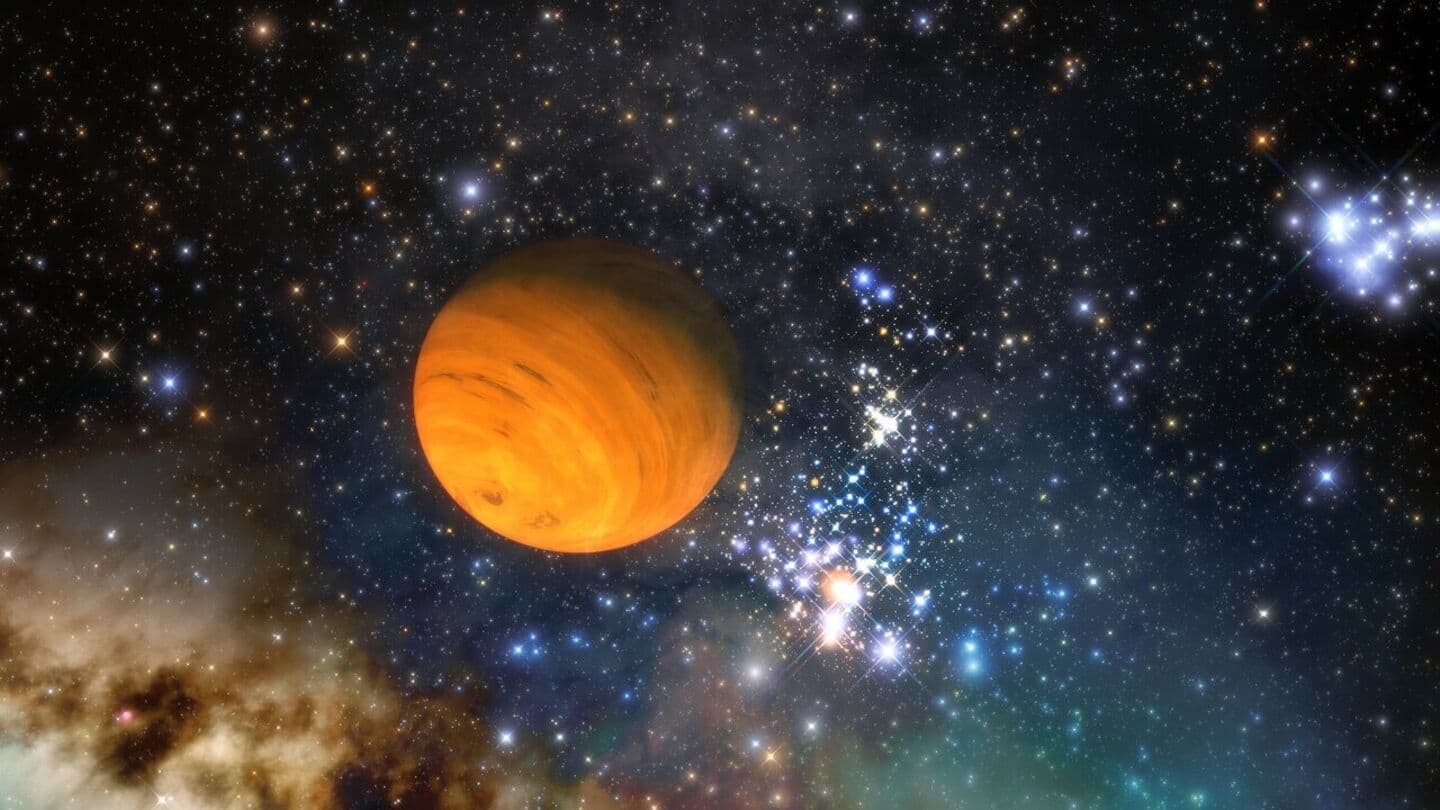
Planetary systems can be formed without a star, says study
What's the story
New research from the University of St Andrews has revealed that giant free-floating planets could form their own miniature planetary systems sans a star. The study, published on the arXiv preprint server, used data from the James Webb Space Telescope (JWST) to observe young isolated objects with masses 5-10 times that of Jupiter. These objects are similar to giant planets but don't orbit a star; they float freely in space.
Celestial enigma
What are free-floating planets?
Free-floating planets are hard to detect as they are faint and mostly emit infrared radiation. However, they could answer key questions in astrophysics. Current studies suggest these are the least massive objects formed like stars from collapsing giant gas clouds. Unlike stars, they don't gain enough mass to start fusion reactions in their cores. Some may even form like planets, orbiting a star before being ejected from their planetary nurseries.
Research methods
Studying the infancy of free-floating planets
A team of researchers from the School of Physics and Astronomy, along with international co-authors, studied eight young free-floating planets to learn more about their infancy. They used two instruments on board the JWST, which is equipped with extremely sensitive infrared instruments. Detailed spectroscopic observations were done from August to October 2024, offering unprecedented spectral coverage and sensitivity for these objects.
Discovery details
Signs of planet formation detected
The research confirmed that these objects have masses similar to Jupiter and six of them show excess emissions in the infrared due to warm dust in their vicinity. This is a tell-tale sign of disks, flattened structures where planets are born. The study also detected emission from silicate grains in the disks, indicating dust growth and crystallization—the early stages of rocky planet formation.
System formation
Principal investigator discusses implications
Dr. Aleks Scholz, the project's principal investigator, said these studies suggest objects with masses comparable to giant planets could form their own miniature planetary systems. He added these systems could be like our solar system but scaled down by a factor of 100 or more in mass and size. However, it's still unclear whether such systems actually exist.